Indian Air Force’s Tejas VS Pakistan’s JF-17 Thunder: Best Home-made Fighter Jet Competition
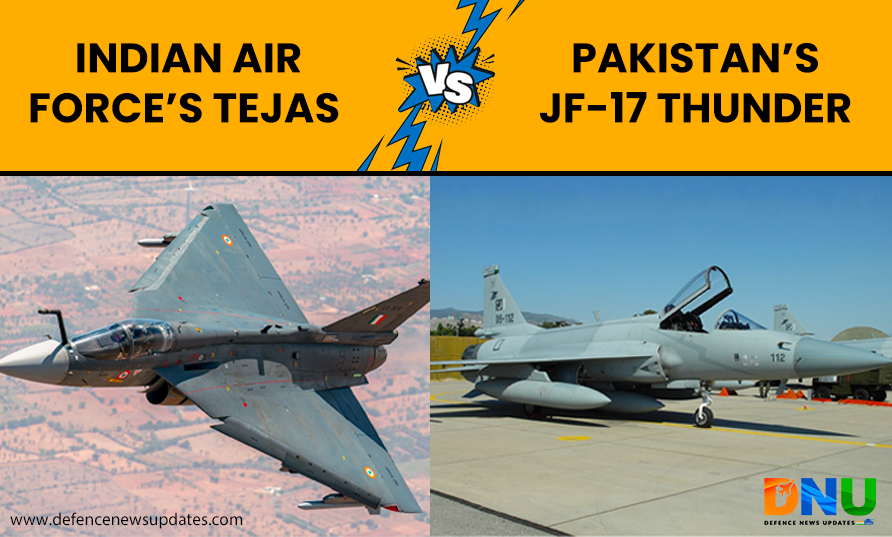
- The JF-17 possesses an airborne pulse doppler fire-control radar made in China and is equipped with laser guided bombs, air-to-air and air-to-surface missiles.
- The HAL Tejas is also converted for use by naval forces and is capable of performing arrested landings and takeoffs from aircraft carriers.
Hindustan Aeronautics Ltd. has agreed to sell the Indian government an additional 83 Tejas light combat aircraft valued Rs 48,000 crore. The agreement represents the largest ever in the field of domestic military aircraft.
The initial order of 123 fighter jets built by HAL was earlier completed by a floated order for 40 Tejas aircraft. Tejas, a single-engine, multi-role supersonic fighter aircraft, will replace the outdated MiG-21 Bison planes from the Soviet era and strengthen the IAF’s combat capabilities.
The Pakistan Air Force, however, considers the JF-17 Thunder to be a home-made fighter jet despite the fact that it was jointly developed with China. Pakistan recently upgraded its JF-17 Thunder to provide the aircraft more firepower as it competes with the HAL-Tejas LCA of the Indian Air Force. The Tejas LCA of the Indian Air Force and the JF-17 Thunder of the Pakistani Air Force are compared below:
Tejas LCA: Under a licencing arrangement to produce it locally by Hindustan Aeronautics Limited, India has long purchased its fighter jets from nations such as Russia, France, and Britain. To replace the ageing MiG-21, which was acquired from the Soviet Union, HAL nevertheless began the Light Combat Aircraft (LCA) programme in the 1980s.
The indigenously produced fighter aircraft, which was given the name Tejas by the former prime minister of India, was incorporated into the Indian Air Force in 2016. The IAF first placed a 20-jet order and the Flying Daggers Tejas Squadron was established in 2016.The IAF has so far ordered 40 Tejas Mk 1 aircraft, including 32 single-seaters and 8 twin-seat trainers. Additionally, the IAF has formalised the purchase of 83 additional aircraft in Mk 1A type.
Pakistan has historically relied on China, the US, and Russia for air power, according to the JF-17 Thunder. An MoU for the cooperative design and development of a new fighter was signed in 1995 by Pakistan and China. identical year.
Mikoyan, a USSR company famous for its MIG series of aircraft, has joined the project to “offer design help.” The outcome was the JF-17 Thunder, also known as the CAC FC-1 Xiaolong, which was largely created to satisfy the Pakistan Air Force’s need for a multi-role, cost-effective, and modern combat aircraft. Yang Wei, China’s “ace designer,” who also created Chengdu J-20, oversaw the development of JF-17.
The fighter jet’s airframe is made up of 42 percent Chinese/Russian origin and 58 percent Pakistani origin. As of 2017, the Pakistan Aeronautical Complex had produced 33 jets of the Block 2 type and 70 planes of the Block 1 type for the Pakistan Air Force.
Tejas LCA: The HAL-built fighter jet is preferably a single-seater but can be converted to a twin-seater based on the needs of the military forces, which are mostly for training. Contrasted to other fighter jets built abroad, this one is light and straightforward and is renowned for its delta wing configuration. It is propelled by a single General Electric engine with a dry thrust rating of 53.9 kN (12,100 lbf).20.200 lbf at 90 kN with afterburner.
It is 13.2 metres in length and 8.2 metres in width. The aircraft’s overall takeoff weight is 13000 kg, while its dry weight is 6500 kg. The Tejas can go 500 km with drop tanks and has a top speed of Mach 1.8 (2222 kph). The Tejas is equipped with Israel’s Elta EL/M-2032 multi-mode fire control radar and is capable of transporting laser guided bombs, air-to-air and air-to-surface missiles, anti-ship missiles, and other weapons.
JF-17 Thunder: The JF-17 Thunder is a single-engine aircraft that may be ordered with either a single seat or two double seats. Its wingspan is 9.48 metres, it has a length of 14.93 metres, and its top high speed is Mach 1.6 (1975 kmph).
The aircraft’s maximum takeoff weight is 12,383 kg, and its dry weight is 6,586 kg. One Klimov RD-93 afterburning turbofan engine powers the Thunder, which has a dry thrust of 49.4 kN (11,100 lbf) and an afterburner thrust of 85.3 kN (19,200 lbf). The JF-17 possesses an airborne pulse doppler fire-control radar made in China and is equipped with laser guided bombs, air-to-air and air-to-surface missiles.
Unlike the JF-17, which was developed jointly by Pakistan and China, the HAL Tejas is an entirely domestically produced fighter aircraft. In addition to being lighter, faster, and having a more potent engine than the JF-17 is the HAL Tejas. Additionally, the cargo carrying capacity exceeds that of the JF-17. As recently proven by HAL and the Indian Navy, the HAL Tejas is also converted for use by naval forces and is capable of performing arrested landings and takeoffs from aircraft carriers.

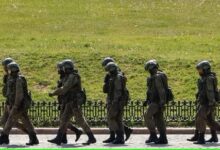

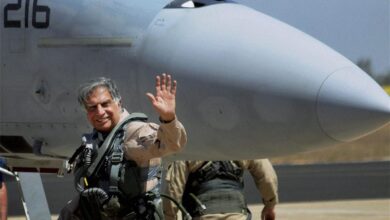
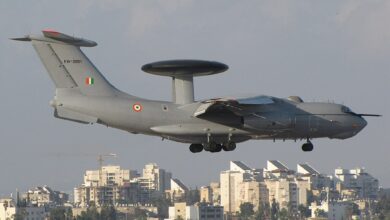
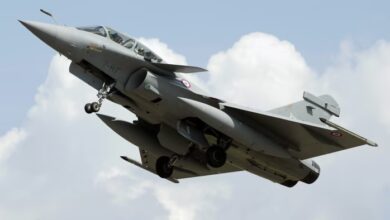
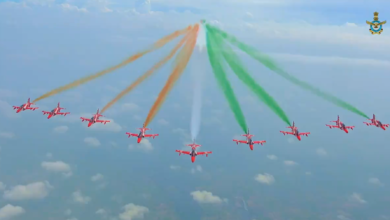
Facebook Comments